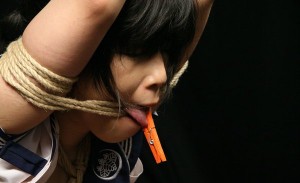Psychosexual dysfunctions in Japan
Japan’s declining birth rate is among the biggest concerns for modern Japanese. Expected to lose 21% of its population by 2050, the economic, political, and social implications of this population collapse is potentially massive for Japan. Why is the population of the country with the second largest economy in the world suffering? Among the reasons blamed is the lack of governmental investment in child rearing programs, a more unstable economic environment with the rise of other Asian economies, and shifting roles for females in modern Japanese society. But there is something that reveals much more about sexuality and attitudes towards sex in Japan. Experts fear Japan is on the verge of a demographic disaster because of sexless marriages. The psychosexual dysfunctions suffered by Japanese that contribute to the sexless marriages have always been regulated by the moral codes of society. Their fundamental attitude towards sexuality and sexless mentality that has been ingrained into Japanese collective thought over centuryís time.

It is impossible to discern current Japanese psychosexual health from its cultural evolution. When people discuss Japanese history, there is an immediate gravitation towards the Samurai ruling period, or the rise of the Japanese soldier class. When discussing psychosexual dysfunctions in Japan, that is not a bad place to start. Influenced by Confucius beliefs, the Samurai warriors lived by the code of self-restraint, behavioral control, and moral ethics. As a result, adults and children of this class rejected sexuality as an expression of human passions. For Samurais, it was a challenge of strength to be something more than common and self-control of the certain bodily fluids symbolized extra human will and dignity. Most Japanese did not practice such sexual self-restraint. But, in the hierarchical and elitist Japanese society the intent was that being better required resolve in behavior.
Considering how isolated Japanese was for centuries, these cultural practices were embedded without being compromised by foreign influences. Much as Confucius ideas was introduced to Japan by early Chinese settlers, the Meiji Period saw increased trade and cultural interactions with Western economic powers that profoundly shook Japanese attitudes towards gender identity. Though there was always a societal gap between male and females in Japan, an increasingly patriarchic society emerged in the wake of economic development. Males became the bread earners, while women stayed at home to care for the children. Broadly speaking, there was not much overt dissatisfaction with this arrangement. It fit well in the context of Japanese history of sexless order, obedience, and the belief in dignity accompanied with doing your duty. However, following the destruction Japan endured after World War II, Japan experienced an influx of the liberal ideas espoused by the Allied West that were hardly sexless. As its history shows, Japan adopted elements of Western attitudes towards sexuality, yet adopted them to fit the particular Japanese context.
So the subject returns to psychosexual dysfunctions and sexless marriages in contemporary Japan. Mainstream Japanese sexual culture and tastes is most peculiar to many outsiders. Japanese schoolgirls are the traditional subject of erotic fantasy within Japanese society. On the streets of Tokyo, vending machines dispense the underwear of Japanese schoolgirls. Even in manga comic books, depictions of average men raping and demeaning schoolgirls are not uncommon as a means to express control. Chikan, or the paraphilic interest in groping, is so common in Japanese trains that some railway companies designate women-only passenger cars during rush hours. Groping is a popular theme Japanese hentai – sexually explicit anime – which, as a genre, accounts for half of anime sales in Japan. Dating-simulator now represents nearly a quarter of all software sold in Japan.

All of this is not to suggest that Japanese attitudes towards sexuality are any more exploitative or fanatical as American or German attitudes. Their sexual tastes are consistent with Japanese society historically being a covert culture. Accomplishing things takes precedence over debating things. In many ways, this mentality explains the success Japanese have had in creating a largely harmonious and stable society for centuries. But, this cultural repression also reveals much about Japanese psychosexual dysfunctions. Officially, there is no compiled information available concerning sexual dysfunctions in Japan. However, this is the same country where conviction rates in Japanese trials have been running at around 99.9 percent for years. Psychotherapists and modern medication to solve psychosexual dysfunctions, such as impotence or lack of libido in men, are accessible. But, Japanese culture has created a precedent of silence towards problems. And what can be concluded by the popularity of sexuality in Japan is that lack of libido is not their main psychosexual dysfunction. What can be deduced from the dropping birth rate is that the most common psychosexual dysfunction in Japan is sexless practices, particularly in the marital context.
[ad#downcont]The common perception among working men is that lack of sexual behavior with their wives is not problematic. In the past decade, Japanese divorce rates have doubled as more women blame their sexually inactive husbands for break-ups. The stresses of Japanese working life, the importance to accomplish something with work, and the alternative covert pleasures accessible from Japanese pornography and a booming Japanese sex industry can satisfy Japanese men just fine. While in societies that attach sexuality to morality, such behaviors would make the newspaper. In Japan, it just is. There is no need to discuss it anymore.
